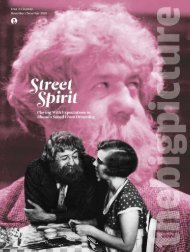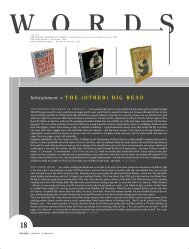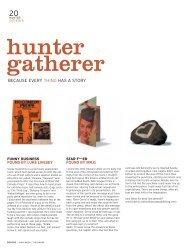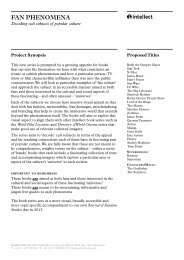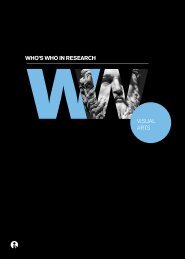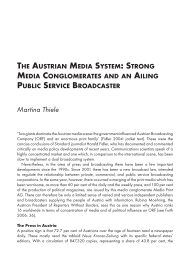Anthem - Intellect
Anthem - Intellect
Anthem - Intellect
Create successful ePaper yourself
Turn your PDF publications into a flip-book with our unique Google optimized e-Paper software.
Signifying Europe<br />
work like a chorus or refrain, reinforcing the impression of a folk ballad or street song,<br />
and the repetition itself creates an insistent expression. The melody moves in a number<br />
of arcs. Each odd bar in the A (and A’) sections climbs up four tones while each even bar<br />
climbs down three or four tones again, so that a full four-bar A (or A’) section consists<br />
of two two-bar arcs. In the B parts, each bar instead presents an arc-formed motif with<br />
three or five tones, adding up to four one-bar arcs. Two syncopations are characteristic<br />
even in the simplest standard versions. First, the last bar of each A (and A’) section<br />
starts with a dotted crotchet note ( ). This little dance-like swing breaks off the<br />
steady 4/4 walk ( ), lending emphasis and energy to each phrase conclusion.<br />
Second, a syncopation is always made as the first note of the A’ section following after<br />
a B section starts one unit earlier and is thus prolonged (<br />
). This twist at<br />
each transition from B to A’ sections help lending the tune a certain restless and eager<br />
energy that avoids the otherwise threatening stomping character.<br />
Rhythmically, Beethoven presents several varieties, some solemnly hymnlike,<br />
other syncopated, energetic and march-like. Similar variations are made in<br />
instrumentation and harmonisation. In the symphony, its various settings explore its<br />
wide range of expressive potentialities, from the simple and steady folk-like hymn<br />
singing, reminding of the Lutheran Reformation tunes that Bach turned into high art,<br />
to the more urgent march of struggle and optimism in the ‘Turkish’ variation, as well<br />
as a series of complex fugato treatments. In the symphony movement’s coda, there<br />
is also a version that is reminiscent of the operatic anthem type, so that Beethoven<br />
himself in his symphony suggested at least three of Boyd’s main anthem varieties:<br />
hymn, march and opera. 400 The various rap and Roma variations mentioned above<br />
have a similar function of exploring the signifying potentials of the core melody. But<br />
certain modifications are made already in the standard versions presented as the<br />
European anthem at various EU websites.<br />
The French composer Christophe Guyard’s September 2000 arrangement of<br />
the anthem, supported by the Council of Europe, has roughly the same tempo as<br />
in Beethoven’s symphony movement (140 bpm). 401 Lucidly performed by a small<br />
orchestra, its 41 seconds just include the main theme without any introduction or<br />
ending, nor any repetition. It avoids the ceremonial as well as the march-like character<br />
of other versions and appears more like a kind of relaxed cinematic background than<br />
a hymn. It is drawn from Guyard’s 6’34” long ‘Rhapsodie sur l’Hymne Européen’,<br />
where it is surrounded by a fluid rhapsody of intertwined voices. It does not interrupt<br />
a chaotic torture like in Beethoven, but rather with light hand evolves from a playful<br />
mix of musical ideas that gently crystallise into the hymn tune and ends with some<br />
elegantly shimmering brass chords. This arrangement does not at all invite any singing<br />
or explicitly reminds the listeners of the hidden lyrics, but may perhaps be heard as<br />
a purely musical illustration of joyful happiness in the merging of different musical<br />
voices.<br />
174



